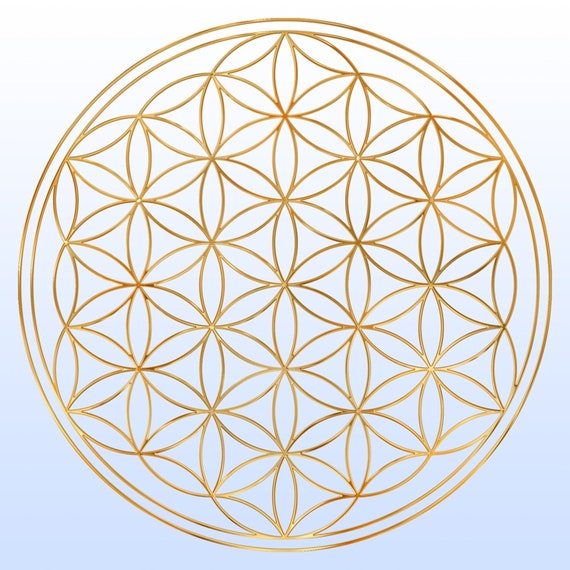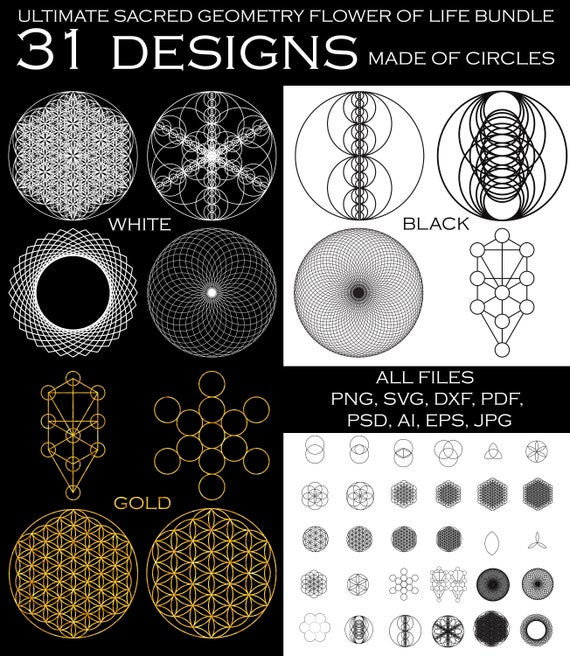The Intricate Appeal of Flower of Life Art: A Guide to Spiritual Geometry in Modern Design
The Flower of Life art, soaked in historical significance and abundant significance, serves as a compelling instance of how spiritual geometry can boost modern decor. This elaborate pattern, made up of overlapping circles, not just astounds the eye however additionally invites consideration of unity and interconnectedness in our lives.
Historic Value of Flower of Life
The Flower of Life is not simply a geometric pattern; it holds extensive historic relevance throughout different societies and people. This complex layout, composed of numerous overlapping circles, has actually been discovered in old holy places, manuscripts, and artifacts, showing its widespread recognition and respect throughout history. Significantly, the Blossom of Life has actually appeared in the art and architecture of ancient Egypt, where it was commonly connected with the sacredness of production and deep space.
In addition to its existence in Egyptian society, the Flower of Life can be traced back to ancient Greece, where theorists like Plato and Pythagoras utilized geometric types to explain the universes, linking mathematics to spirituality. This icon has actually also been located in the Far East, especially in Buddhist and Hindu art, where it represents the interconnectedness of life and the cycle of existence.
The withstanding nature of the Flower of Life mirrors its duty as an universal sign of harmony and unity. As societies have developed, this style has actually transcended its historic roots, remaining to inspire modern art and spiritual practices, consequently maintaining its importance across time and societies.
Meaning Behind the Layout

The Blossom of Life is often related to sacred geometry, recommending that the universe is structured according to specific geometric principles. This belief indicates that the patterns discovered in nature, such as the branching of trees or the formation of crystals, mirror a magnificent order. Additionally, the layout is thought to represent the cycle of life, regeneration, and fatality, stressing the continuous nature of existence.
In various spiritual practices, the Flower of Life is seen as a resource of magnificent energy and knowledge, functioning as a device for meditation and consideration. By integrating this symbol into art and style, individuals look for to conjure up a feeling of consistency and balance in their environments, getting in touch with the much deeper meanings installed in the style. Hence, the Blossom of Life transcends simple aesthetics, personifying profound spiritual relevance.
Modern Applications in Design
In modern interior layout, the Blossom of Life concept has arised as a preferred ornamental component, flawlessly blending aesthetics with much deeper spiritual significances. This complex pattern, composed of overlapping circles, signifies unity, interconnectedness, and the intermittent nature of life, making it an excellent selection for modern spaces seeking harmony.
Inside developers incorporate the Flower of Life right into numerous applications, consisting of wall surface art, fabrics, and furniture layout. Wall surface murals or published canvases featuring this geometric pattern can visit their website function as striking centerpieces, while throw pillows and rugs decorated with the motif add a subtle yet innovative touch to living locations. Additionally, furnishings pieces, such as coffee tables with decorative screens or etched styles, boost spatial looks while advertising a sense of balance.
The Flower of Life is also finding its method into lights components, where its forms can develop mesmerizing shadows that stimulate a sense of harmony. Beyond simple design, these applications invite reflection and inspire a link to deep space, boosting the total setting of any type of space. As the appreciation for spiritual geometry grows, the Flower of Life remains to resonate within modern decoration, representing both charm and much deeper relevance.

Creating Peacefulness With Spiritual Geometry
Exactly how can sacred geometry promote a sense of tranquility in our home? The principles of spiritual geometry, rooted in ancient customs, resonate with unified proportions and all-natural patterns found in deep space. By integrating forms and layouts such as the Blossom of Life, individuals can cultivate a tranquil setting that promotes equilibrium and tranquility.
The Blossom of Life symbol, defined by interconnected circles, embodies unity and the interconnectedness of all living points - Sacred Geometry Flower of Life. This intricate design not just captivates the eye yet also encourages mindfulness and representation. When purposefully positioned in a home, such representations can work as centerpieces that attract attention far from disorder, inviting a moment of tranquility

Integrating sacred geometry into decor can enhance the emotional atmosphere of a space. The in proportion and balanced nature of these styles can evoke feelings of security and comfort. In addition, the repetitive patterns found in spiritual geometry can create a reflective aesthetic experience, aiding to minimize stress and stress and anxiety.
Eventually, accepting sacred geometry in our living spaces enables us to develop a haven of tranquility, fostering a much deeper link with ourselves and the globe around us.
Tips for Incorporating Blossom of Life
The Flower description of Life symbol can be perfectly incorporated right into numerous elements of home design to improve both aesthetic charm and psychological wellness. One reliable method to integrate this spiritual geometry is via wall art. Choose for large canvas prints or framed pieces including the Blossom of Life style, which can serve as prime focus in living rooms or meditation rooms.
Textiles offer one more tool for assimilation. Consider pillows, throws, or drapes embellished with the Flower of Life pattern to infuse your space with harmony and balance. Furthermore, wood or ceramic decor items-- such as bowls or coasters-- can feature etched or painted styles, developing refined yet impactful accents throughout your home.
For a more immersive experience, incorporate the Flower of Life into your garden or outdoor spaces. Garden stones or sculptures can show this geometry, inviting harmony right into your outside setting. Take into consideration using the sign in lights components; pendant lamps or chandeliers can develop thrilling darkness that improve the atmosphere.
Final Thought

The Blossom of Life art, soaked in historic relevance and abundant meaning, serves as a compelling example of how sacred geometry can enhance modern decor.Inside developers integrate the Flower of Life into numerous applications, consisting of wall surface art, textiles, and furniture design (Sacred Geometry try this Flower of Life). By incorporating layouts and forms such as the Flower of Life, individuals can cultivate a serene setting that advertises balance and peace
Decide for huge canvas prints or framed pieces including the Blossom of Life design, which can serve as focal factors in living areas or meditation spaces.
The Blossom of Life art exhibits the harmonious integration of spiritual geometry within contemporary decor.